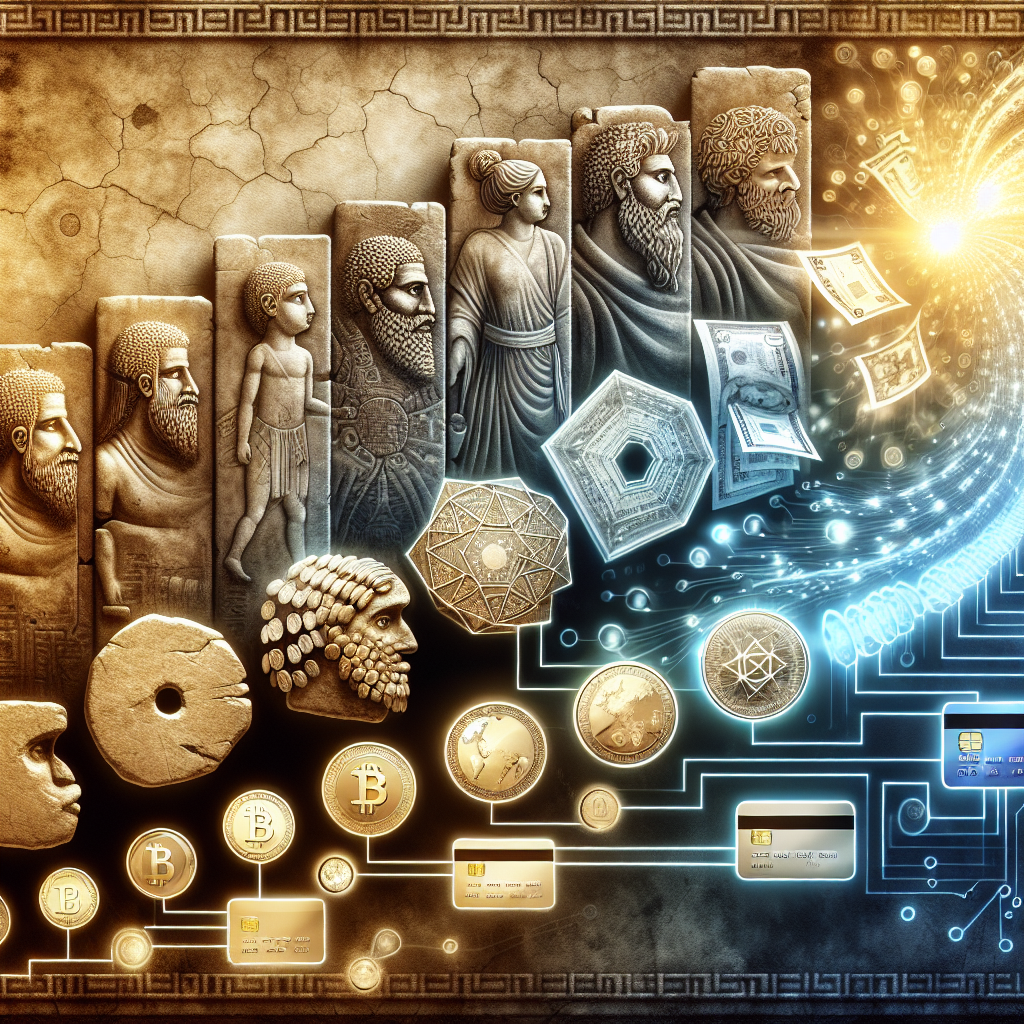Rethinking Money: From Ancient Tablets to Modern Blockchain
The concept of money has undergone radical transformations throughout human history, evolving from simple barter systems to the complex digital currencies we use today. With the emergence of blockchain technology, we are finding new ways to understand and utilize money, making it crucial to reexamine our perspectives on this fundamental aspect of society.
The Evolution of Money: A Historical Perspective
To fully grasp the significance of blockchain in our financial systems, it’s vital to look back to where it all began. Since ancient times, humans have sought mediums of exchange that would simplify trade and represent value. Here’s a brief overview of the evolution of money:
- Barter Systems: In the earliest economic exchanges, goods and services were traded directly. However, this system suffered from scalability issues, leading to the need for a more efficient method of exchange.
- Commodity Money: Societies began using commodities like grains, salt, and metals as a standard for trade. These items possessed intrinsic value and could be easily recognized and divided.
- Coins and Currency: The introduction of minted coins in ancient civilizations allowed for standardized currency, enhancing trade and economic organization.
- Banknotes: During the Middle Ages, the introduction of paper money marked a shift, offering more convenience and portability over heavy coins. This eventually led to the establishment of modern banking systems.
- Digital Money: The rise of the internet brought about the creation of electronic currencies and payment systems, dramatically changing how people transferred value.
The Advent of Blockchain Technology
Blockchain technology emerged in 2008 with the creation of Bitcoin, a decentralized digital currency that operates independently of a central authority. This innovation has reshaped our understanding of money in several ways:
- Decentralization: Unlike traditional currencies that rely on central banks, blockchain allows peer-to-peer transactions without intermediaries. This fosters a sense of financial autonomy.
- Transparency: Blockchain provides a public ledger where transactions are recorded immutably. This transparency reinforces trust among users and reduces the risks of fraud and corruption.
- Security: Cryptographic techniques safeguard data, ensuring that transactions are secure and protecting users against unauthorized access.
- Efficiency: By streamlining the transaction process, blockchain reduces the time and costs associated with traditional banking systems.
Rethinking the Concept of Value
One of the most profound impacts of blockchain technology is the redefinition of value. As digital currencies become more widespread, our beliefs about what constitutes “money” are evolving. Here are some pivotal points of this paradigm shift:
The Role of Trust
In traditional monetary systems, trust is centralized around financial institutions. However, decentralized currencies shift that trust to the technology and the community using it. This enables users to transact with confidence, knowing that:
- Transactions are recorded on a tamper-proof ledger.
- Smart contracts automate agreements, reducing reliance on third parties.
Democratizing Finance
Blockchain’s characteristics pave the way for financial inclusion. Many individuals in developing regions lack access to banking services. Cryptocurrencies allow them to participate in the global economy:
- They can open digital wallets with just a smartphone.
- Access to cross-border transactions without hefty fees.
- Empowered to engage in the broader financial ecosystem, including investment opportunities.
The Future of Money in a Blockchain World
As we move forward, the integration of blockchain technology in our financial systems will likely lead to significant changes in how we perceive and interact with money. Industries are already experimenting with various models that could redefine monetary transactions:
Central Bank Digital Currencies (CBDCs)
Governments worldwide are exploring the implementation of CBDCs, which blend the stability of government-backed currency with the innovative features of blockchain. This could lead to:
- Enhanced monetary policy tools for central banks.
- A safer, more integrated financial ecosystem.
- Boosting economic activity through advanced payment solutions.
Smart Contracts and Automated Transactions
With smart contracts, automated agreements can execute transactions without human intervention. This technology could revolutionize various sectors:
- Real estate transactions becoming efficient and transparent.
- Supply chain management with real-time tracking of goods.
- Insurance claims processing that automatically triggers payouts based on predetermined conditions.
The Challenges Ahead
Despite the promising advancements, several challenges need addressing for blockchain and cryptocurrencies to achieve mainstream adoption:
- Regulatory Hurdles: Governments are still grappling with the regulatory framework governing cryptocurrencies, which can stifle innovation.
- Scalability Issues: Current blockchain networks face challenges in transaction speed and capacity, necessitating further technological development.
- Public Perception: Misunderstandings about cryptocurrency often lead to skepticism. Education will be crucial in overcoming these barriers.
Conclusion: A New Era of Money
The journey from clay tablets to blockchain illustrates humanity’s ongoing quest to develop an efficient and reliable medium of exchange. As we rethink the concept of money in the age of blockchain, we stand on the precipice of a new financial landscape.
This evolution challenges us to reconsider our values, trust systems, and the role of money in our lives. Ultimately, the question remains: how will we shape the future of money? With the power of blockchain technology, the possibilities are limitless, paving the way for a more decentralized, inclusive, and transparent financial ecosystem.
In this rapidly changing world, understanding these shifts is not just important but essential for anyone looking to navigate the future of finance effectively. As we continue to explore the implications of blockchain, one thing is certain: the way we perceive and use money will never be the same again.




